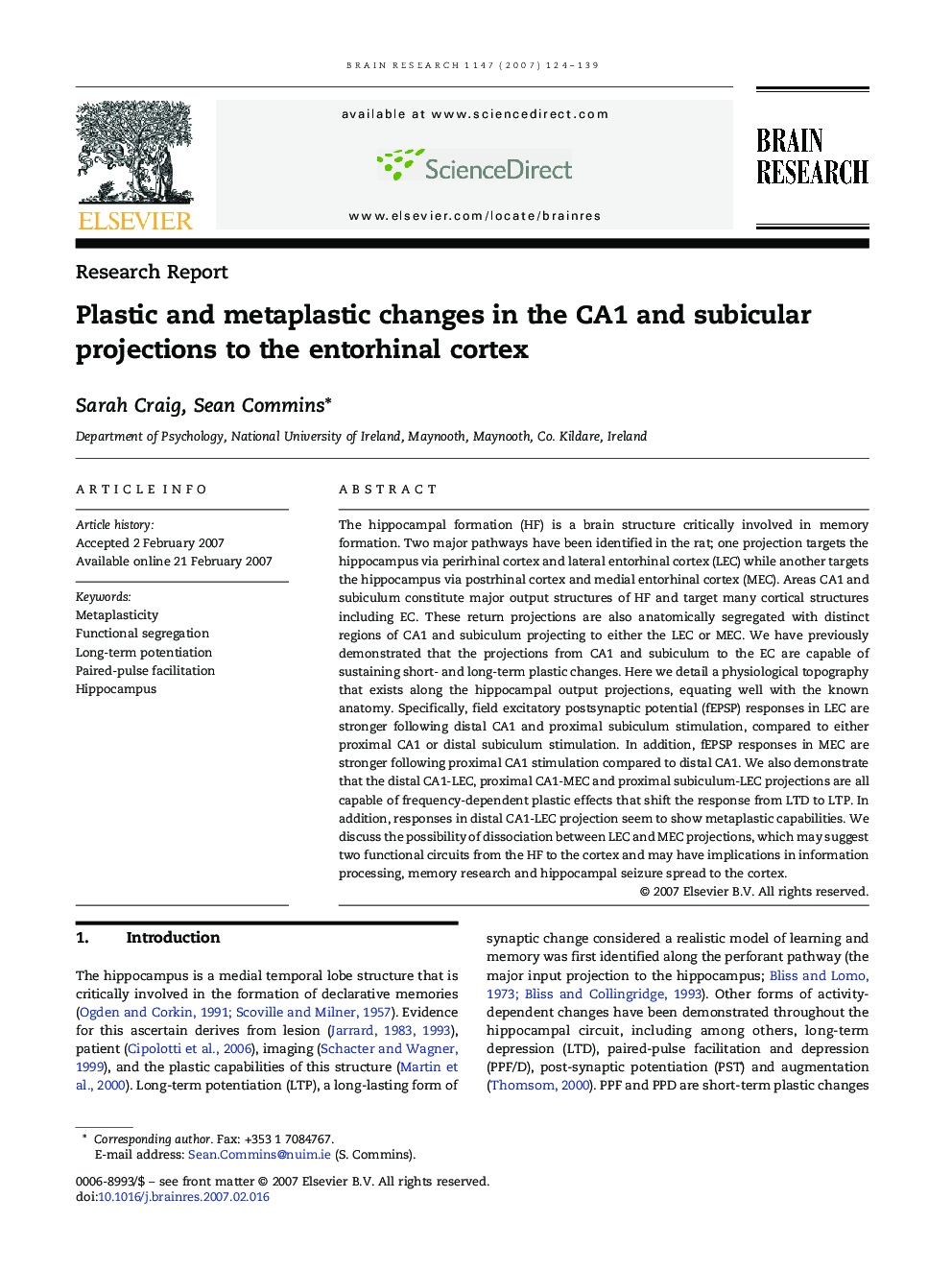| Article ID | Journal | Published Year | Pages | File Type |
|---|---|---|---|---|
| 4331178 | Brain Research | 2007 | 16 Pages |
The hippocampal formation (HF) is a brain structure critically involved in memory formation. Two major pathways have been identified in the rat; one projection targets the hippocampus via perirhinal cortex and lateral entorhinal cortex (LEC) while another targets the hippocampus via postrhinal cortex and medial entorhinal cortex (MEC). Areas CA1 and subiculum constitute major output structures of HF and target many cortical structures including EC. These return projections are also anatomically segregated with distinct regions of CA1 and subiculum projecting to either the LEC or MEC. We have previously demonstrated that the projections from CA1 and subiculum to the EC are capable of sustaining short- and long-term plastic changes. Here we detail a physiological topography that exists along the hippocampal output projections, equating well with the known anatomy. Specifically, field excitatory postsynaptic potential (fEPSP) responses in LEC are stronger following distal CA1 and proximal subiculum stimulation, compared to either proximal CA1 or distal subiculum stimulation. In addition, fEPSP responses in MEC are stronger following proximal CA1 stimulation compared to distal CA1. We also demonstrate that the distal CA1-LEC, proximal CA1-MEC and proximal subiculum-LEC projections are all capable of frequency-dependent plastic effects that shift the response from LTD to LTP. In addition, responses in distal CA1-LEC projection seem to show metaplastic capabilities. We discuss the possibility of dissociation between LEC and MEC projections, which may suggest two functional circuits from the HF to the cortex and may have implications in information processing, memory research and hippocampal seizure spread to the cortex.
